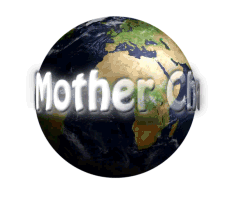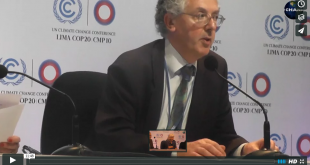Ms Ilissa Ocko, Climate Scientist at Environmental Defense Fund (EDF) in New York gives insights into how Climate Change is currently impacting Africa and what the future holds, at COP 22, Marrakech.
Scientists have identified and observed climate change impacts on every continent and in every ocean and referring to the 2014 IPCC AR5 Working Group II report which synthesizes our current knowledge of the climate change impact and details them into three main categories, i.e. a) Physical changes – ice melts and sea water rise, b) Biological impacts – changes to ecosystems and c) Societal impacts – threats to food production and human health and how these impacts are spread globally. Africa is no exception in terms of climate change impacts and contributions with considerable confidence in attribution to climate change as well, with observed impacts in the latter half of the twentieth (20th) century into the twenty-first (21st) century due to lack of rain, rising temperatures, severe flooding and drought and fisheries and livestock loss/reduction due to lack of water and heat stress across the greater five regions of Africa.
Future impacts are set to get worse as further climate change is inevitable, which is confirmed in 2014 IPCC AR5 report which indicates that in the future, average and extreme temperatures are set to increase across the entire continent, changes in rainfall and drought are regionally dependent, varying according to locale, the strongest reduction in average rainfall will be in Southern Africa, along with an increased chance of drought and in East Africa an increase in extreme rainfall and reduced chances of drought, with sea level rise expected to impact all the coastlines around Africa.
Global climate models are employed to understand what sorts of impacts we may encounter, with a recent study done to ascertain changes in areas suitable for key crops by mid century, showed changes in areas suitable for crops now compared to what would be suitable mid century for the nine (9) agronomic crops which are considered critical for food and security in Africa like banana, common bean, cassava, maize and sorghum, etc. Overall, these types of model simulations are extremely valuable because they provide a lot of information for decision makers in terms of a) understanding what we are working to avoid when we develop plans to reduce emissions of GHG’s, b) learning how to prepare for the future and adapt to regional changes if these projections come to fruition and c) learning where other opportunities lie in order that we can prepare to take advantage of new situations.
There is a lot of adaptation experience in Africa that has been significantly growing with various local and national plans and policies that are emerging and even though there are challenges for deployment of these plans, there are strategies in place to address those risks and barriers.
Links :
https://www.edf.org/people/ilissa-ocko (EDF: Environmental Defense Fund)
https://www.reference.com/geography/five-regions-africa-fe459902c9033a04
http://www.pbs.org/wnet/africa/explore/greatlakes/greatlakes_overview_lo.html
 Mother Channel Environmental, climate change news and media.
Mother Channel Environmental, climate change news and media.



